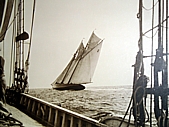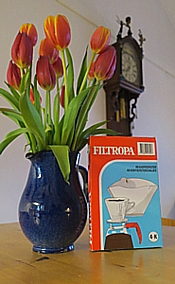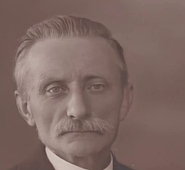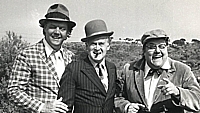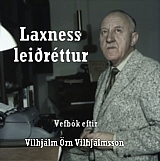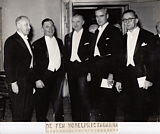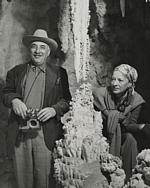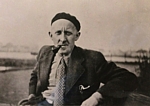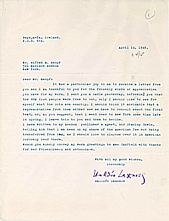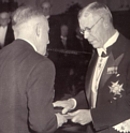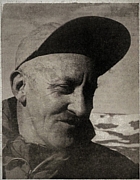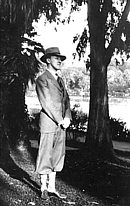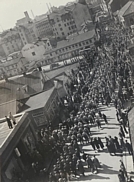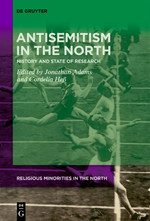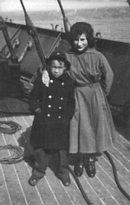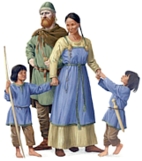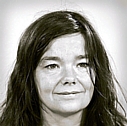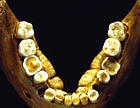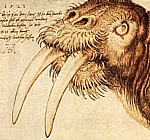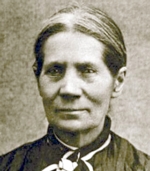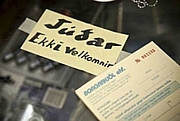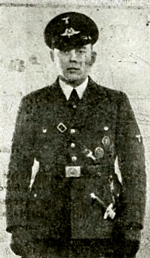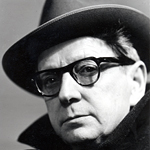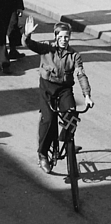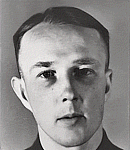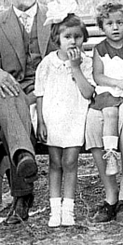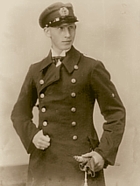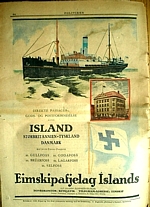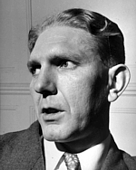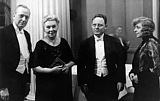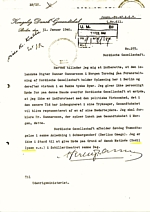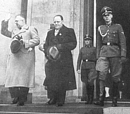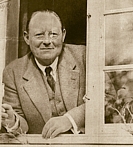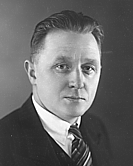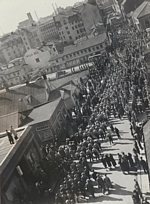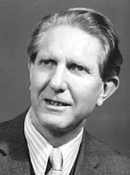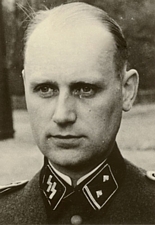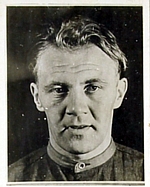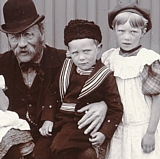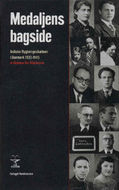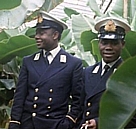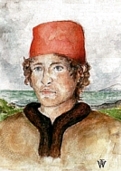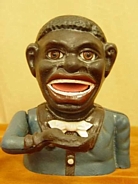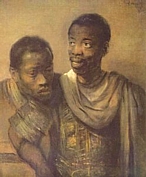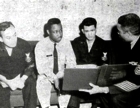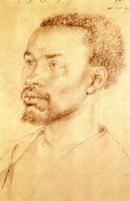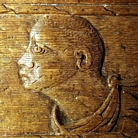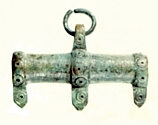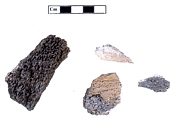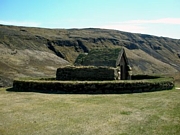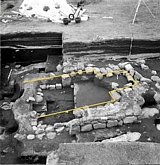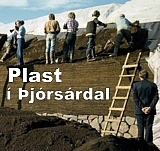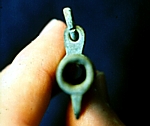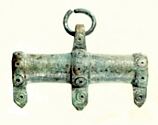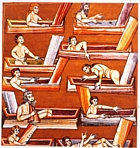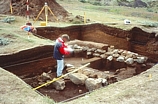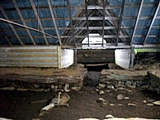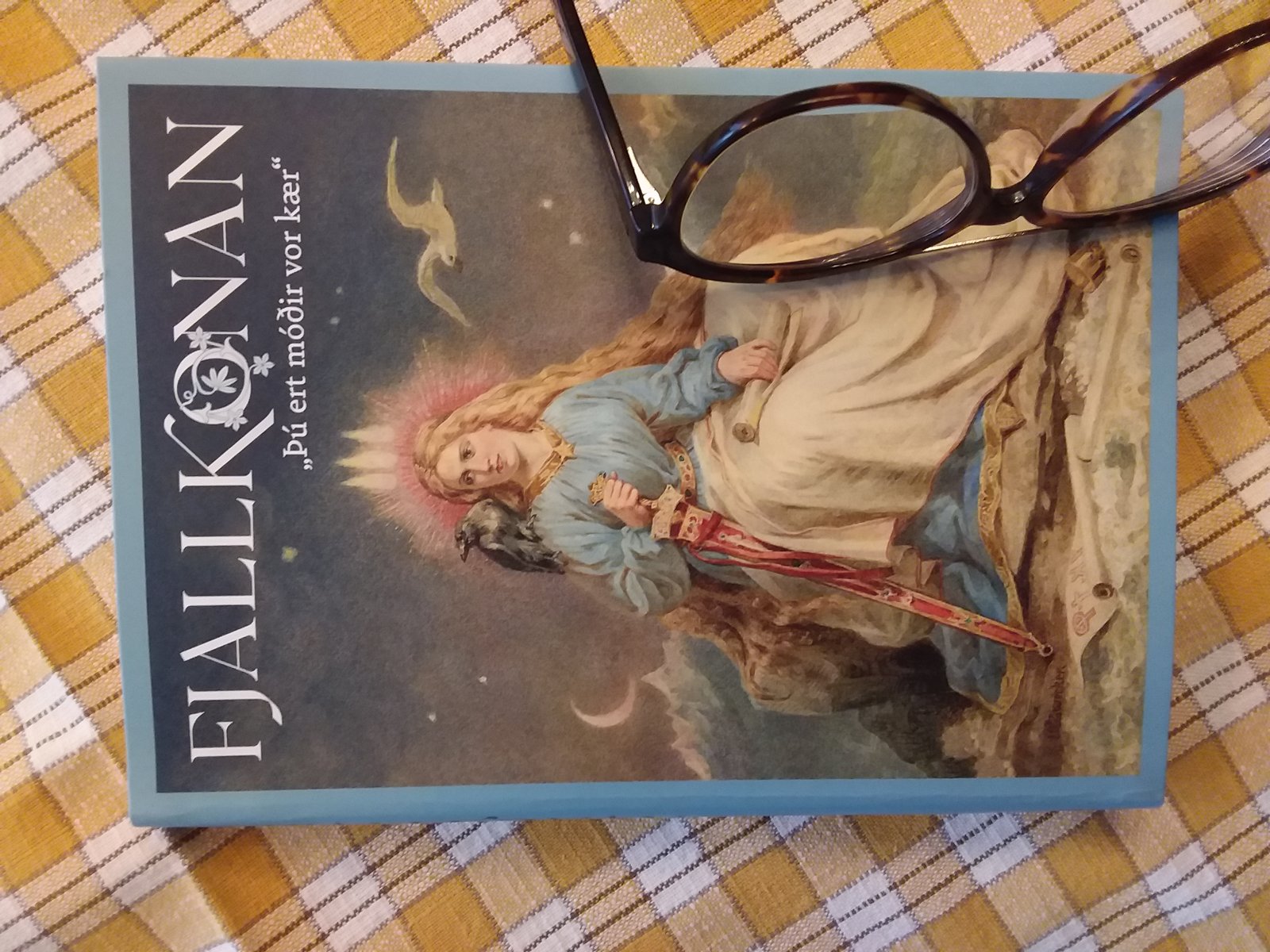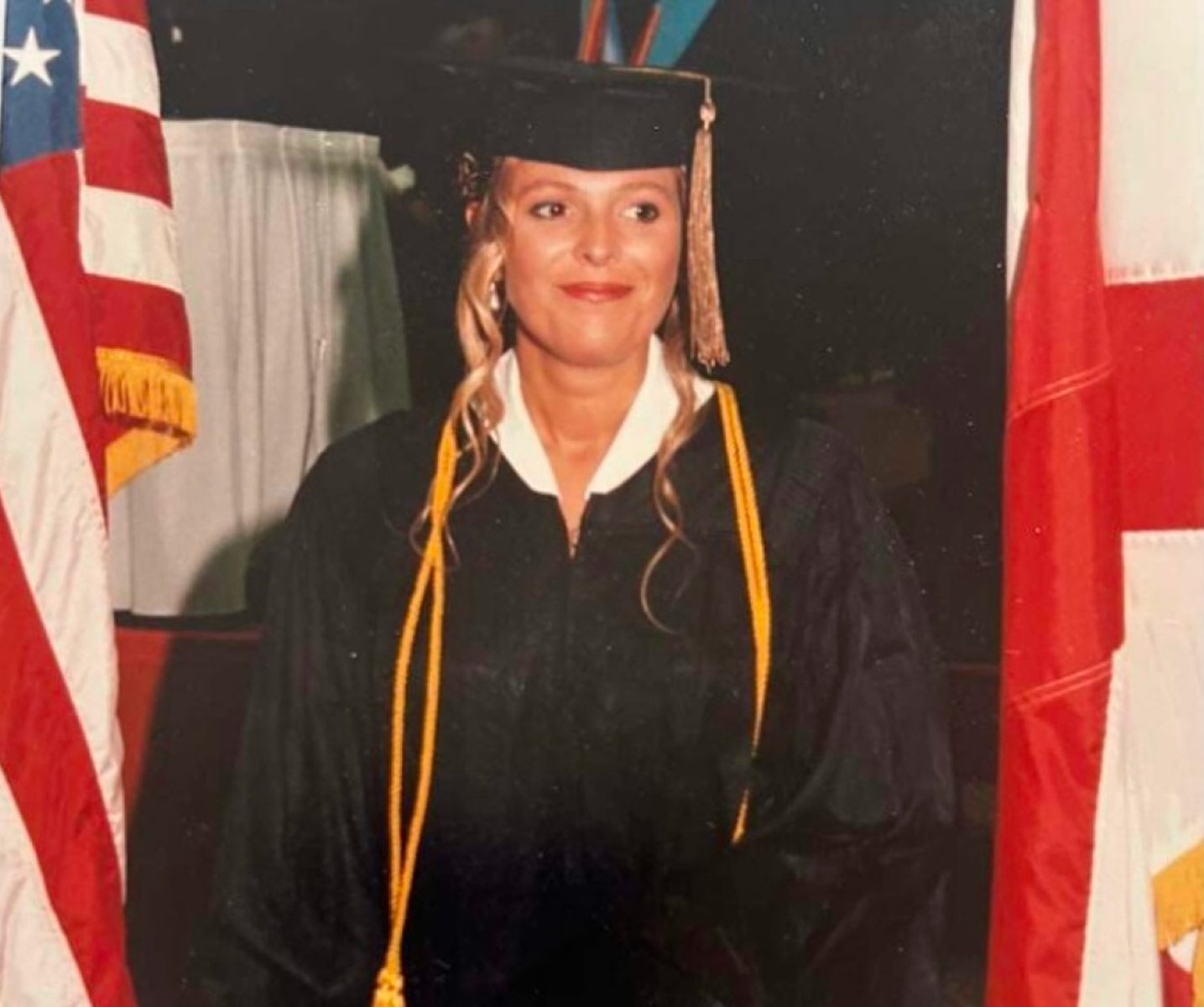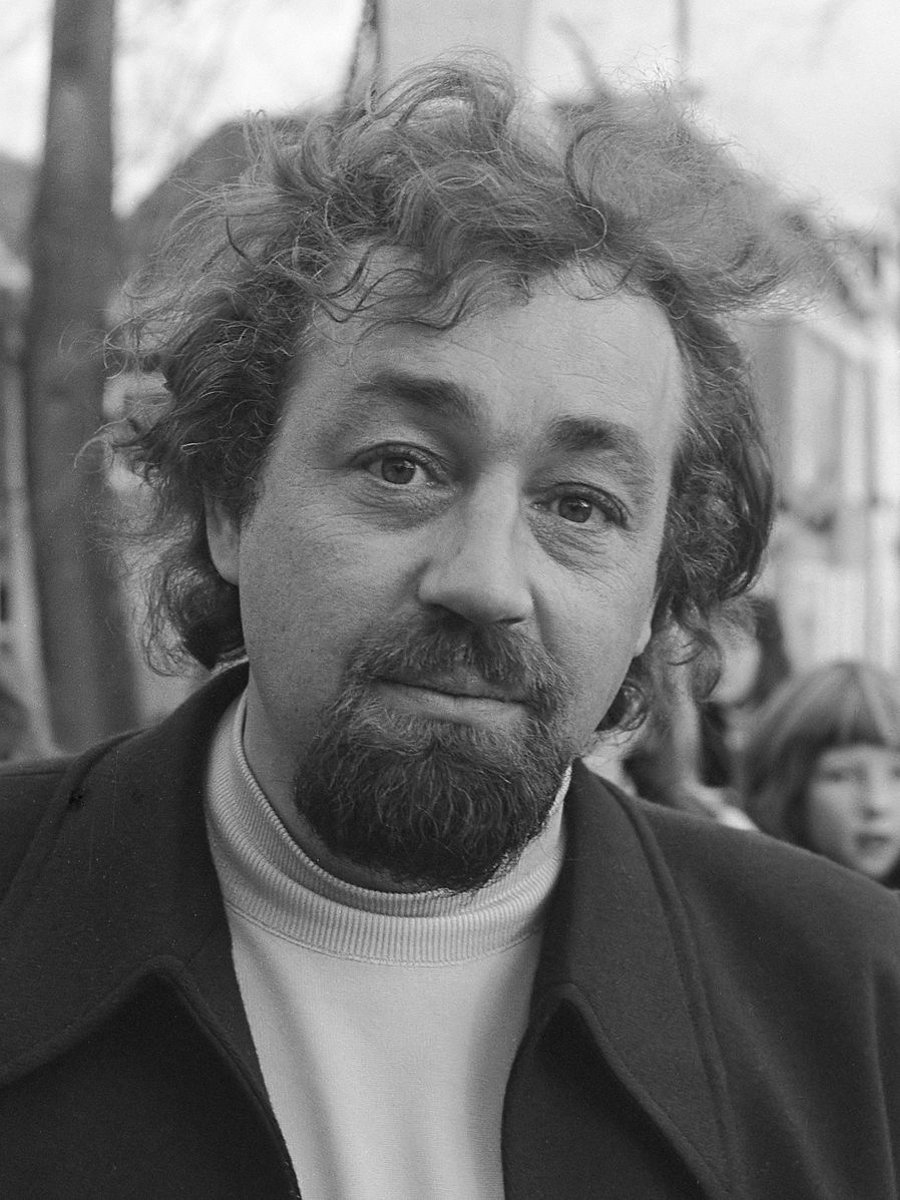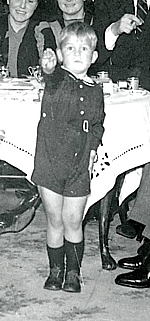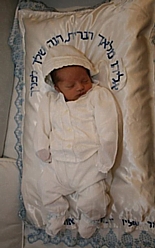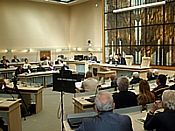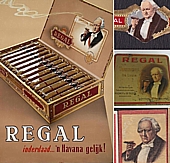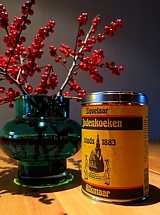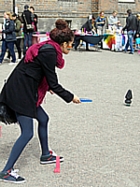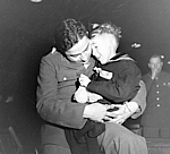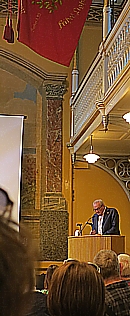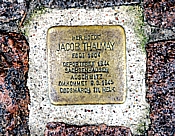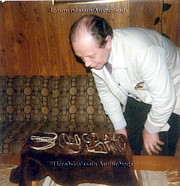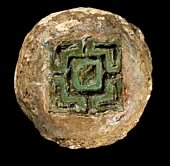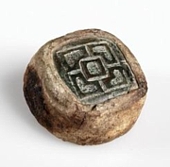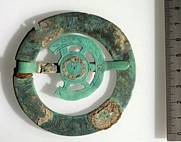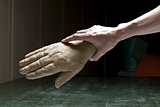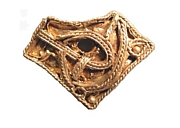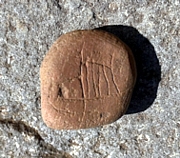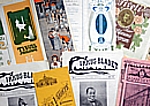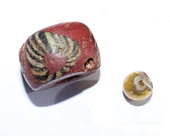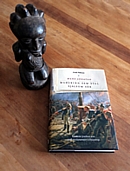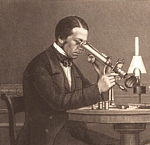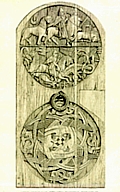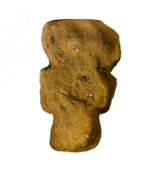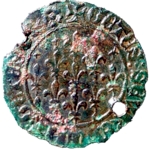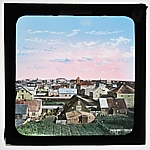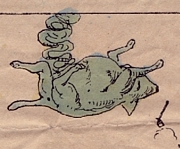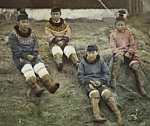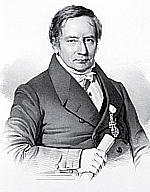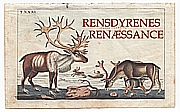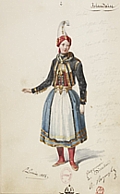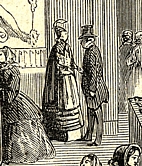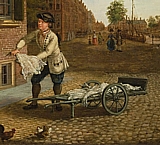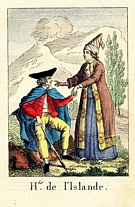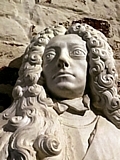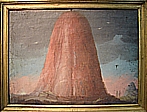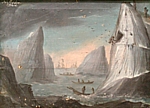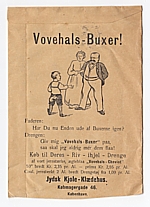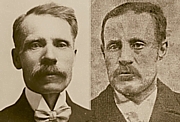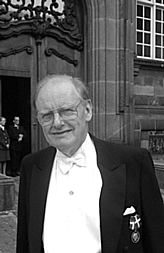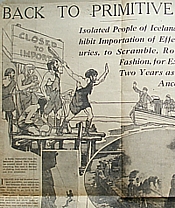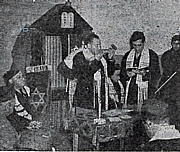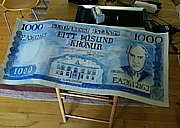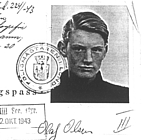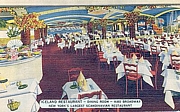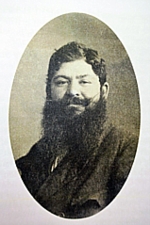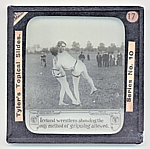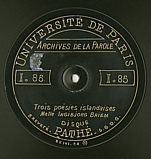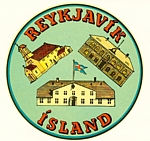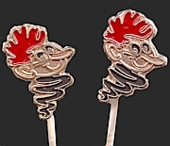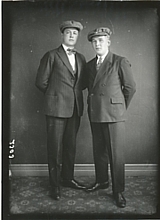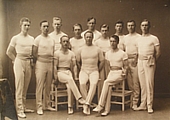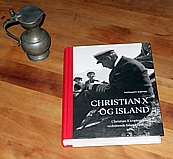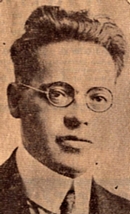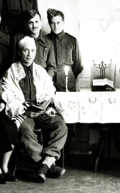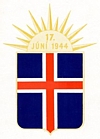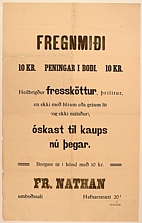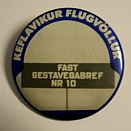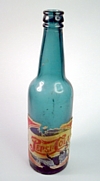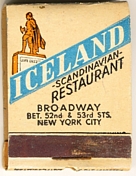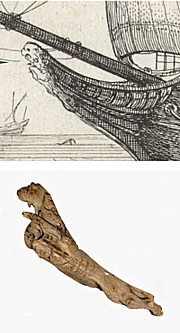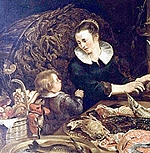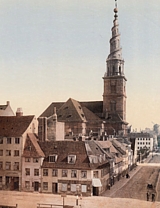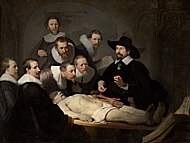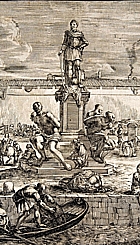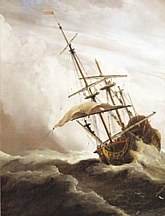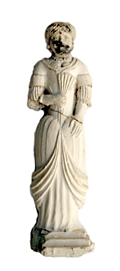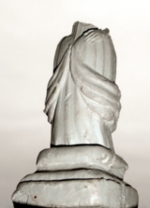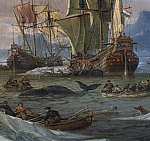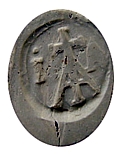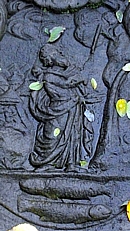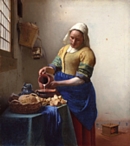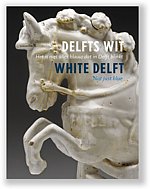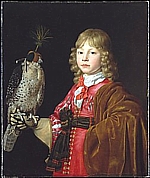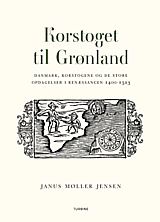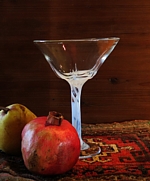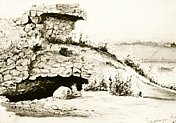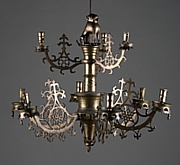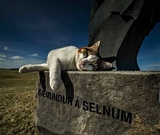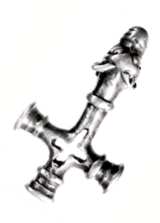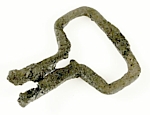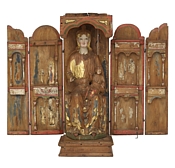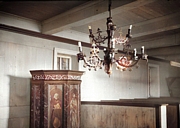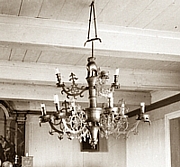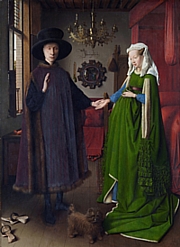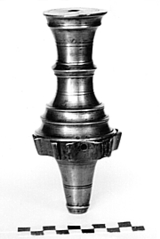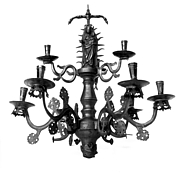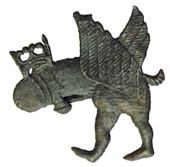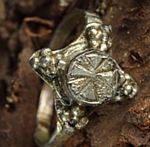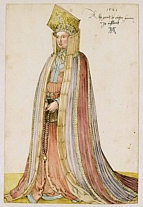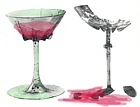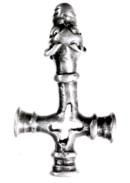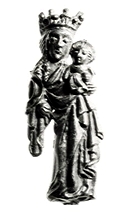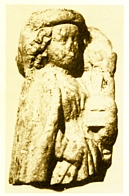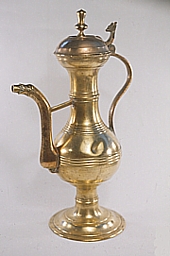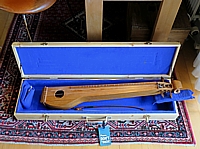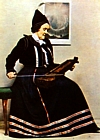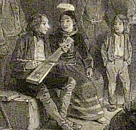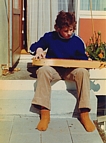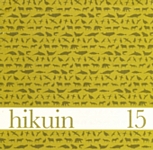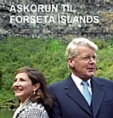Bloggfćrslur mánađarins, júní 2024
Fjallkonunni sem var fargađ
24.6.2024 | 20:23
Sendisveinn Fornleifs hefur dvaliđ á Íslandi í nokkra daga. Eins og gengur, ţarf mađurinn ađ bregđa sér í sund.
Í afgreiđslu Laugardagslaugarinnar var bođin billeg Fjallkona eins og pylsa međ öllu, en hún var heldur nakin og rýr, enda građís.
Ég er hér ađ rćđa um bókina sem var brennd vegna ţess Katrín Jakobsdóttir vildi á Bessastađi og Bjarni Ben hélt upp á ţađ međ bálför á fyrstu útgáfu. Bókin er ekkert betri ţó Bjarni Ben hafi skrifađ innganginn, eftir ađ fyrsta upplaginu hafđi veriđ fargađ á báli hégómans.
Ţađ var fyrst og fremst illa skrifuđ grein Godds (Guđmundar Odds Magnússonar) sem fer fyrir brjóstin á mér.
Goddur, sem er heimsfrćgur á Íslandi fyrir gáfur, fer rangt međ, er hann segir sögu Fjallkonunnar. Líklegast veit hann bara ekki nóg um ţađ sem hann er ađ skrifa um. Á blađsíđu 33 birtir hann mynd af fjallkonu Sigurđar Málara (sem sumir kölluđu Sigga sjení). Myndin var af teikningu í skissubók Sigurđar.
Nú er bara sá galli á gjöf Njarđar, ađ Sigurđur leitađi í hús til annarra. Fjallkonan hans er nefnilega frönsk. Sigurđur varđ fyrir áhrifum frá ballettsýningu í París, sem sagt var frá í myndablöđum víđa í Evrópu. Fornleifur hefur einnig greint frá ţví hér efir ađ allir voru búnir ađ gleyma. Lítill krókfaldur Fjallkonu Sigurđar sver sig í ćtt viđ "skautbúninga" kvennanna í ballettsyningunni í París. Greinilegt er, ađ Goddur les ekki Fornleif. Hann Goddur veit allt betur en ađrir.
Fjallkonan er ekki ađeins útlend og allrahanda á okkar tímum. Vonandi verđur annarri útgáfu Fjallkonunnar ekki fargađ, ţótt grein Godds sé verri en bćđi formáli Katrínar Jak. ellegar gormćli Bjarna bakara, sem olli dýrri bókabrennu.
Líklega verđur mađur einnig ađ spyrja sig, hvort Fjallkona eigi yfirleitt erindi til nútímafólks áriđ 2024? Fjallkonan er líkast til ekki nógu mikil öfgakona. Alţjóđ má ekki einu sinni nálgast leikarafjallkonuna á Austurvelli, ţar sem hún tređur jafnan upp međ leikurum og trúbadorum úr Alţingishúsinu. Nú er ţađ orđin eins konar einkasýning og er ţađ vegna öfga í ţessu annars svo friđsama landi.
Bloggar | Breytt 25.6.2024 kl. 07:50 | Slóđ | Facebook | Athugasemdir (0)
Copenhagen Jewish Cultural Festival 2024 : 3
9.6.2024 | 11:41
Copenhagen Jewish Cultural Festival 2024:3
Meet the Ostrynskis
One of the afternoons (4 June 2024) during the Jewish Cultural Week in Copenhagen, I listened to a very good interview Michael Rachlin had with Nathalie Ostrynski, the author of a new book entitle De Mřrke Bĺnd (The Dark Ties,) published in 2024 by small publishing house Grřnningen 1. I finally bought her book, which I have started to read. I like it very much. It is a very special book, which I want to recommend for all those who work with refugees.
1980
I moved from Iceland in 1980 to Denmark to study archaeology. 1980 was also the year Nathalie Ostrynksi was born. In the Ĺrhus suburb of Brabrand, were I ended up living in some great students´accommodations, after some problems finding a permanent place to live (see here in Danish), I ran into many elderly Jewish refugees in and around the City West shopping precinct in Brabrand. I became good friends with a few of them, who could speak English or German and some even a little Danish. I drank coffee with them in the "mall" and was invited to their cultural afternoons in the Brabrand local library, more often than I could attend.
One thing I remember clearly, was some of the elderly men´s bitterness. Not only that towards Poland they had to leave due to antisemitism. More stressing to some of the elderly in the group, seemed to be the attitude of some Danish Jews they encountered after they had arrived in Denmark in the late 1960s. I never got the full explanation of what that attitude really was all about. But it definitely resulted in some of the Jews moving to Ĺrhus away from Jewish life in Copenhagen.
I tried to find out by asking Nathalie Ostrinsky a very frank question, where I described what my impression of the Polish Jews was in the 1980s suburb of Ĺrhus. My question has since resulted in five non-Polish Jewish members of the Jewish community in Copenhagen approaching me, to tell me with a stiff pointy finger, "That it was not like I think it was.". They all told me that they have visited the refugee ship St. Lawrence in the Copenhagen, to help the newcomers from Poland - and some assured me that everyone aboard that ship had been happy - and that those who were not content were probably just some sour and miserable Communists, "who didn´t want anything to do with Jewish life anyway".
Well, imagine some of the Jews who headed for Ĺrhus reading professor Isi Foighel´s very negative assessments of them in a report he wrote for a Danish Refugee agency in Danmark. Why was a professor of Economics, a conservative politician and himself a child-refugee from Nazi Germany so negative towards newcomers in need. Prof. Foighel phoned me. when my book Medaljens Bagside (The other Side of the Coin) was about to be published, flushing out gallons of sour wine from his grapes of wrath, telling me that he would do everything in his power to stop my book, because "some things were better forgotten than mentioned" like he put it. His brave opponent in the once upon a time Copenhagen Kehilla-Conflict (best forgotten), Rabbi Bent Melchior, had also learned about a detail in my book. He was much more civilized about me digging into the past than professor Foighel was, when he commented on an application he had made for an Aliyah to Israel, which I had discovered in an Israeli archive. Young Melchior wanted to move to Israel because of Anti-Semitism in post-WWII Denmark.
Bent Melchior´s appplication for an aliyah due to Antisemitism in Danmark. Fig. 134, page 334 in my book Medaljens Bagside (Forlaget Vandkunsten 2004).
Possibly some of the Jewish gentlemen in Brabrand, a few of them possibly disillusioned Communists, might also have heard how their "ideological brother" in Denmark, editor Carl Madsen, described the Jewish refugees from Poland in his book Flygtning 33 (Refugee 33, published in 1972) about the political Refugees of the 30s. Madsen wrote: In 1969 the stream of so-called "refugees", ca. 1900 of them, came to Denmark. Jews from Poland dominated. Nowadays, no one speaks about them any more. They have been utilized. Now forgotten. Back than they could be used, and allowed themselves to be used in an excessive campaign of defamation against Socialist Poland."
Welcome to Denmark, Rřdgrřd med flřde og én over nakken. ... ... ... Denmark is what Denmark is, what Denmark is, what Denmark has always been: A very flat Country.
Bloggar | Breytt s.d. kl. 12:28 | Slóđ | Facebook | Athugasemdir (0)
Copenhagen Jewish Cultural Festival 2024:2
9.6.2024 | 10:29
Copenhagen Jewish Cultural Festival 2024:2
Mr. Potato-Man was Jewish. The Inventor of a Most Famous Potato-Dish and his Danish Descendants
More Jewish Culture - straight from Copenhagen. Friday (noon), when I had been cleared at the security gate of the Copenhagen synagogue, which is unfortunately totally necessary in our time and age), I met some of my elderly lady friends (who are little bit older than I am - which nobody would ever guess).
They had just listened to editor of Danish daily Politiken´s talk - and were still in distress. Anders Jerichow had chocked some of the nice ladies with his comments. For many years Jerihow has been pacifying the readers of Politiken, telling them what most of them want to hear.
Jerichow, who is a descendant of German clergy and psalm-poet (which explain the non Jewish Jericho sounding name), also has Jewish roots. Jerichow has once written that his Jewish background gives him more legitimacy to judge Israel than other Danes.
I have once taken the liberty to ask him about his Jewish background, but he didn´t want to tell me his family story, which gives him the power to satisfy the many readers of Politiken.
Some while ago, the secret was finally revealed by A. Jerichow´s son, who yesterday was accompanying his dad at shul. Jerichow jr. was dressed in a striped white & green mistral jacket, which in my opinion was the bravest fashion statement at this year´s Copenhagen Jewish Culture Festival.
The Jewish ancestor, who gives editor Jerichow of daily Politiken his permit, to occasionally take somewhat incomprehensible stands towards Israel, was Swedish restaurateur Jacob Wilhelm Davidsson, who converted to Christianity in the 19th Century. Davidsson is supposed to have "invented" the the world famous Hasselback-potato (see above photo) at the Pavilion Restaurant Hasselbacken in merry Stockholm´s Djurgĺrden-park (For more information on this "Jewish" invention here).
The alleged creator of this world famous potato-dish, has possibly given his 21st Century-Editor-Descendant a card blanch potato dish to criticise Israel extraordinarily to the satisfaction of all of his his Hasselback-Potato-Loving-Readers.
With the Danish Lurpak-butter melted on top of these potatoes, this dish is probably not kosher for others than some hard-core Politiken readers, when they serve it with pork dishes and Scandinavian-style Antisemetic Pickles on the side. B´te´avon!!
Bloggar | Breytt 14.6.2024 kl. 12:17 | Slóđ | Facebook | Athugasemdir (0)
Copenhagen Jewish Cultural Festival 2024:1
9.6.2024 | 09:39
Copenhagen Jewish Cultural Festival 2024:1
Ladino Music in Klezmer Mode
Monday last (3 June), I went to sjoel to listen to Ladino-music pereformed at the Jewish Cultural Festival 2024.
Unfortunately, the musicians, who were really 1t class - and even from W-Jutland -, were far too infiltrated in their Klezmer-"oumpaoumpa"-background to click into the "real" Ladino gear of amor y corazones.
That specific Monday nightm I might actually have attended a Klezmer concert with some Arabic-music undertones, which might be of Jewish origin.
However, singer Ayala Zimbler Hertz (of the Danish Royal Opera) was the highlighting Star - but the music was too fusioned to give me the genuine Andaluz feeling - whatever that is?. ... Who knows? I don´t, but it was probably never as Klezhmatic as it was last Monday.
Bloggar | Breytt s.d. kl. 12:18 | Slóđ | Facebook | Athugasemdir (0)
Hallađ á Katrínu
2.6.2024 | 07:44
Ég óska nýjum forseta til hamingju međ sigurinn í forsetakjörinu. Hana kaus ég ţó ekki, og hefđi aldrei kosiđ.
Mér fannst hallađ óeđlilega á minn mann, hana Katrínu, í ţessum kosningum. Orđrćđan gegn henni var á stundum yfirgengileg. Forsetakjör á Íslandi hefur nú orđiđ fengiđ á sig hálfamerískan brag.
Kjafturinn og áróđurssnakkiđ gegn Katrínu međal sumra ađdáenda Höllu Tómasar, en helst ţó í liđi Höllu Hrundar, var yfirgengilegt. Helst mátti halda ađ einhver óeđlis-Trumpur vćri í innsta kjarna íslensku ţjóđarinnar. Mađur hefur svo sem séđ hann.
Almennt ţykir mér ljóst, ađ flestir ţeirra sem fóru fram í ţetta frambođ, hafa aldrei tekiđ sér tíma til ađ lesa starfslýsingu embćttisins. Mig grunar einnig, ađ nýkosinn forseti muni reyna ađ snúa embćttinu upp í eitthvađ Kana-fyrirbćri. En ţađ verđur örugglega ekki ţolađ af meirihluta ţjóđarinnar. Forseti Íslands er EKKI embćtti sem hćgt er ađ nota ađ vild og plotta međ.
Nú verđur gaman ađ sjá, hvort ógeđstvískinnungurinn í samtökum ţeim (The B Team) sem Halla T. hefur unniđ fyrir, verđi bođađur frá Bessastöđum. Mun Halla T. krefjast stríđs viđ Rússa, svo nýríka og "betra" fólkiđ geti fengiđ glás af ódýru Litíum í rafbílana sína og ţannig brunađ inn í Skammtímaútópíu sína? Slík Kanaherferđ mun ađ mínu mati skapa miklu stćrri B, C, D, E, og F Teams en nokkru sinni áđur.
Mikiđ vill Meira, mun vćntanlega standa yfir dyrum á Bessastöđum nćstu fjögur árin og helst sem neonskilti. En ţiđ kusuđ ţađ yfir ykkur, kjánaprikin ykkar. Myndin efst er ţegar Halla forseti varđ bakkalárus í MONTGOMERY Alabam forđum, ţegar hún var ekki framkvćmdastjóri knattspyrnuliđs (Soccer-mom), en ţau afköst virđast vera afar illa undirbyggđ, enda skipta ţau ekki rassgats máli fyrir forseta íslenska lýđveldisins, ţó ţeirri stöđu hafi veriđ skellt á afrekaskrána.
Bloggar | Breytt s.d. kl. 08:28 | Slóđ | Facebook | Athugasemdir (1)
Vreeswijk og augun hans
1.6.2024 | 11:59
Ég sá í gćr seinni hluta tvíţáttungs í sjónvarpinu hér í Danmörku, sem fjallađi um líf og sorgir sćnsk-hollenska trúbadorsins Cornelis Vreeswijks. Ţetta voru frábćrir ţćttir um stórskáld sem ţjáđist á ýmsan hátt, en gaf heiminum samt svo mikiđ, og meira en flestir. En eins og allir var hann langt frá ţví ađ vera fullkominn, og sá ţví ekki ađ ađrir liđu mjög vegna óútreiknanlegrar hegđunar hans.
Hann kippti sér greinilega ekki upp viđ ađ Svíar báru aldrei nafn hans rétt fram. En í seinni ţćttinum gerđi einn mađur ţađ rétt, og fát kom greinilega á Vreeswijk (Freysvík) í beinni útsendingu.
Ég hef ávallt haft miklar mćtur á rödd og textum Vreeswijks. Í hinni miklu súpu ţjóđarbrota sem sest hefur ađ í Niđurlöndum síđan á 16. öld, hefur mér líka ţótt gaman ađ líta inn í stór vot möndluaugu meistarans, ţar sem ég hef séđ fólk sem kom međ fyrstu gyđingunum sem flýđu frá Portúgal til Hollands og sumir međ "millilendingu" í Bayonne eđa međ smástoppi í Antwerpen.
Nú getur Vreeswijk einnig hćglega hafa fengiđ möndluaugun sín frá forfeđrum sem voru Baskar, Armenar eđa ítalskir gyđingar, og kannski er til erfđaefni sem hćgt vćri ađ rannsaka. Gćti hugsast ađ einhver forfeđra hans hafi veriđ frá Freysvík í V-Húnaţingi. En sjaldan hef ég séđ karla eins og hann af ţeim slóđum og til er ţorp sem kallast Vreeswijk ekki langt frá Utrecht. En eftirnafniđ var nú einnig ţekkt á međal gyđinga, m.a. í den Haag. Hér fyrir neđan er brot úr málverki Rembrandts af lćkninum Ephraim Bueno (sem m.a. sat á skólabekk i Leyden nokkru á undan Íslendingum, sem ţar voru í námi sjá hér). Hann kom frá Portúgal. Undanfariđ birtast ć fleiri rannóknir, ţar sem genatýpan (genamengiđ) er sögđ meira samhliđa phenótýpunni (útlitinu). Slíkar yfirlýsingar voru vitaskuld hćttulegar, ţegar nasistar náriđluđust á líkamsmannfrćđinni, enda hlustuđu ţeir ekki á rök - og DNA-iđ var sem betur fór ekki komiđ inn í umrćđuna.
Bloggar | Breytt s.d. kl. 17:27 | Slóđ | Facebook | Athugasemdir (0)


